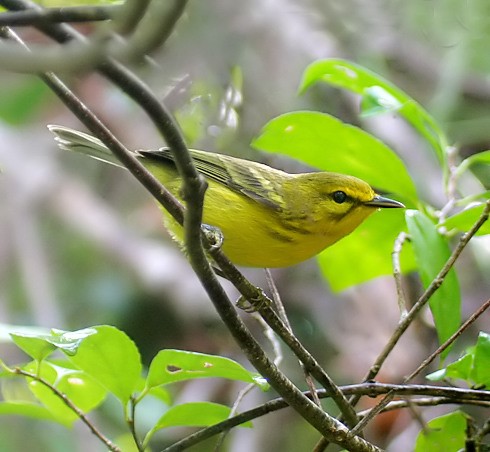
Vitelline Warbler, male. © Steve Metz
Authoritative sources from James Bond to Herbert Raffaele indicate that the Cayman Islands lost their only endemic bird species, the Grand Cayman Thrush, to extinction in the mid-1900s, but recent research indicates more targets for the visiting birdwatcher. Two currently recognized species and four “distinct forms” are either endemic to the Cayman Islands or nearly so. All of the endemics occur on Grand Cayman, three on Cayman Brac, and two on Little Cayman.
It is possible to find all of the Caymanian endemics by spending a morning at any of several sites on Grand Cayman, most conveniently at Queen Elizabeth II Botanic Park. (For general orientation to the Cayman Islands’ main birdwatching sites, see the map below or go to The Avitourist’s Guide to the Cayman Islands.)
Endemic Birds of the Cayman Islands

Male “Grand Cayman Woodpecker”. © Doug Gordon
“Grand Cayman Woodpecker” (Melanerpes superciliaris caymanensis): Endemic to Grand Cayman, where it is common in wooded areas across the island. Readily found at Botanic Park, the Mastic Trail, and North Side. Less numerous west of Bodden Town, but it can sometimes be found at Barkers National Park, in West Bay neighborhoods, in palm stands along Seven Mile Beach, etc. Traditionally classified as a subspecies of West Indian Woodpecker, but it seems to be a good candidate for eventual recognition as a separate species, as the other subspecies differ strongly in having bold black masks. Its relegation to subspecies status seems inconsistent with current standards of species delineation.
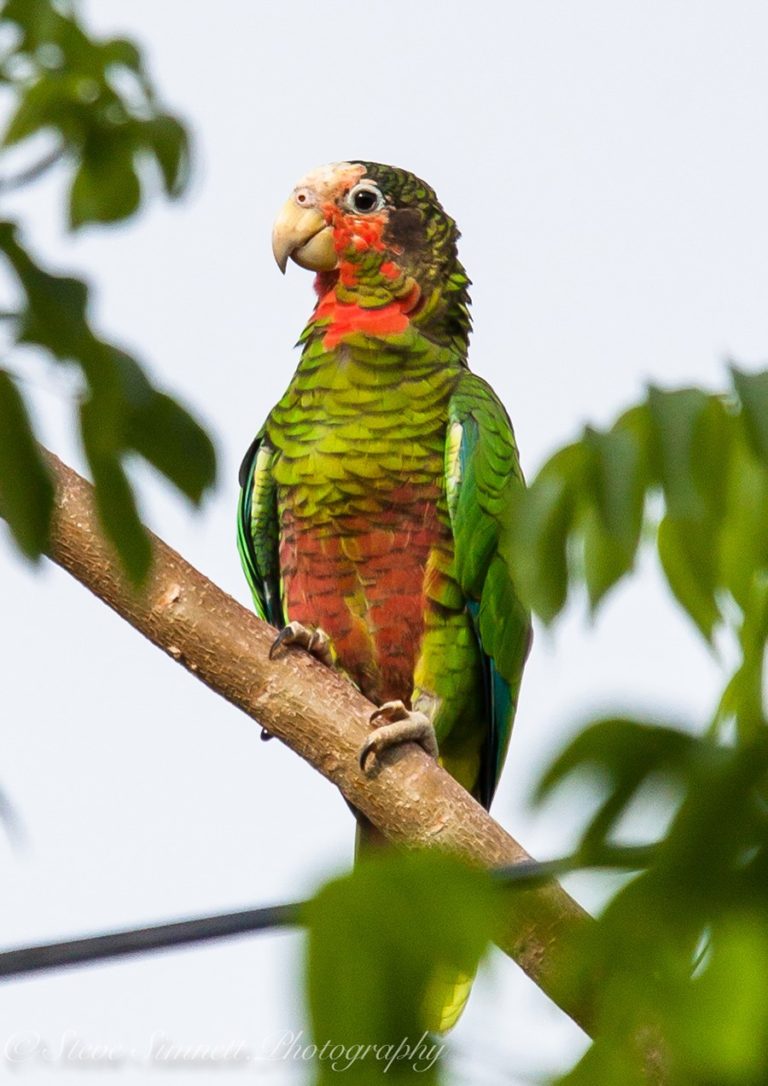
“Cayman Parrot”. © Steve Simnett
“Cayman Parrot” (Amazona leucocephala caymanensis): Endemic to Grand Cayman and Cayman Brac, where it is locally common in dry forests. On Grand Cayman, it is most easily found at the Botanic Park and along the Mastic Trail. Sporadic in George Town and the tourist corridor along Seven Mile Beach to West Bay. On Cayman Brac, it is most reliably found in and around the Brac Parrot Reserve. Traditionally regarded as conspecific with “Cuban” and “Bahama” Parrots—collectively comprising the Cuban or Rose-throated Parrot—but the taxonomy of this group is unsettled. The “Cayman Parrot” differs noticeably in plumage from the other forms and seems to be a likely candidate for eventual recognition as a separate species. It is also the national bird of the Cayman Islands.
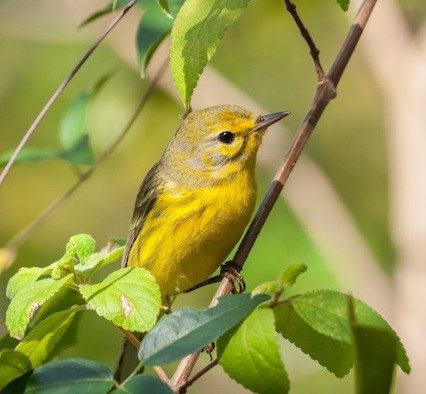
Vitelline Warbler. © Jim Hoover
Vitelline Warbler (Setophaga vitellina): Endemic to the Cayman and Swan Islands (islets 200 miles southwest of Grand Cayman, 100 miles north of eastern Honduras)—but as the Swans are not readily accessible it is effectively endemic to the Cayman Islands. Common in dense woodlands and tall brush on all three islands. On Grand Cayman, Botanic Park, the Mastic Trail, and North Side are reliable sites. The populations on Little Cayman and Cayman Brac are recognized as a separate subspecies, crawfordi, which is yellower and less streaked than the Grand Cayman subspecies.

Male “Grand Cayman Woodpecker”. © Steve Metz
“Grand Cayman Spindalis” (Spindalis zena salvini): Endemic to Grand Cayman, where it is uncommon and local in dry woodlands on the eastern side of the island. It can usually be found along the Woodland Trail at Botanic Park and along the Mastic Trail by listening for its thin, high-pitched calls. Currently classified as one of five subspecies of Western Spindalis—but all are distinguishable based on voice and coloration, and potential candidates for species status.

“Cayman Bananaquit”. © Steve Metz
“Cayman Bananaquit” (Coereba flaveola sharpei): Endemic to the Cayman Islands, where it is common to abundant in most habitats. Easy to find throughout its small range, including Botanic Park, the Mastic Trail, George Town, and along Seven Mile Beach. Probably the most numerous songbird on all three of the Cayman Islands. The “Cayman Bananaquit” has not been widely recognized as distinct. Nevertheless, it appears to be intermediate between the “Greater Antillean” and “Bahama” forms—both of which have been proposed as candidates for recognition as a separate species. “Cayman” is more closely related to “Greater Antillean” (based on genetic evidence), but visually similar to “Bahama,” and its voice is distinct from both. In the eventual reckoning of the Bananaquit, the “Cayman” form may require a separate account.
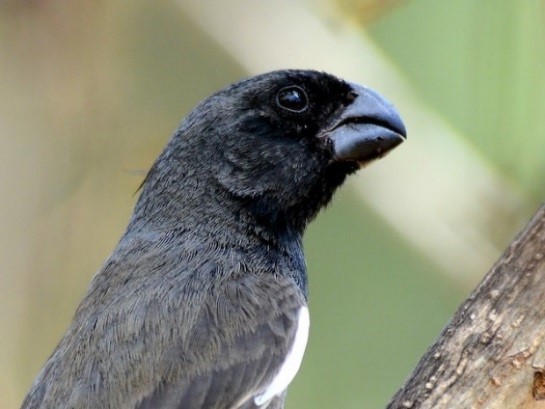
Grand Cayman Bullfinch. © Alan Van Norman
Grand Cayman Bullfinch (Melopyrrha taylori): Endemic to Grand Cayman, where it is fairly common in dry forest on the eastern side of the island—especially Botanic Park and the Mastic Trail. Traditionally considered a subspecies of Cuban Bullfinch, but they differ in bill structure, voice, and plumage, and are increasingly regarded as separate species. The Handbook of the Birds of the World Alive has adopted this change, and it seems likely that other authorities will eventually adopt it as well.
Other Notable Birds of the Cayman Islands
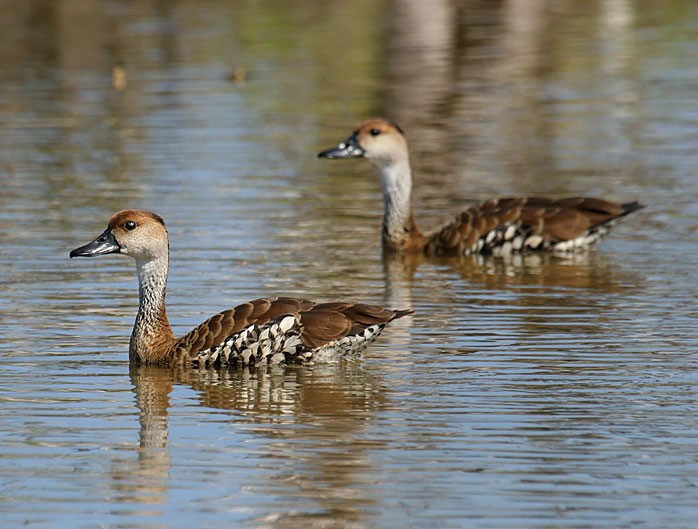
West Indian Whistling-Duck. © Steve Metz
West Indian Whistling-Duck (Dendrocygna arborea): Widespread in the West Indies, but greatly reduced in overall numbers and difficult to find across most of its historical range, the whistling-duck is probably more common on Grand Cayman than anywhere else. Small numbers are usually present at Botanic Park, large numbers are almost always present at Willie’s Pig Farm in North Side, and it is generally easy to find on ponds throughout the island.
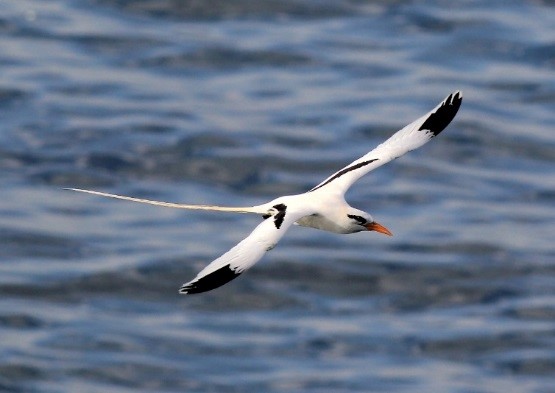
Catesby’s Tropicbird. © Jason Leifester
Catesby’s Tropicbird (Phaethon catesbyi): Breeds on Bermuda and throughout the West Indies. Difficult to find away from its breeding areas. One of the highest concentrations is on Cayman Brac, where about 100 pairs nest on bluffs, mainly at the northeastern end of the island, from January to June or July.
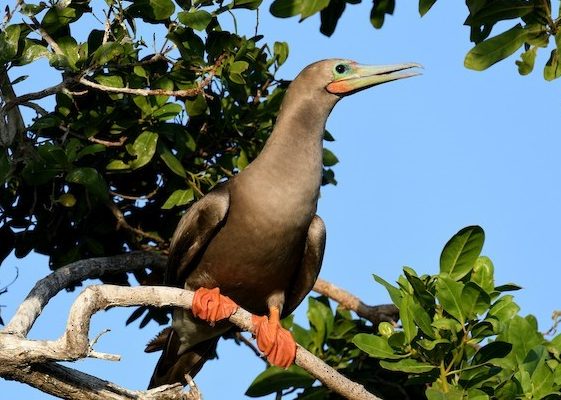
Red-footed Booby. © Terence Zahner
Red-footed Booby (Sula sula): Pantropical, highly pelagic seabird that is difficult to find except at its breeding colonies—most of which are on remote islands. Approximately 2,500 to 3,000 pairs nest at the Booby Pond Nature Reserve on Little Cayman, mainly from January to June. This colony represents about one-third of the total Atlantic population and is one of the few easily accessible colonies in the world.
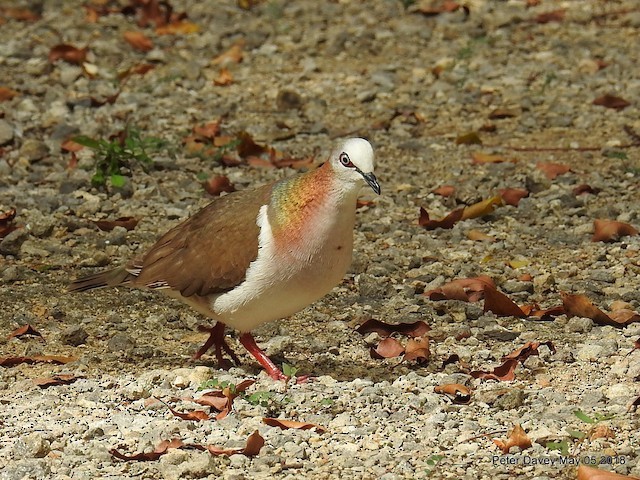
“Red-necked Dove”. © Peter Davey
Caribbean (“Red-necked”) Dove (Leptotila jamaicensis collaris): The Cayman subspecies of Caribbean Dove can be found at Botanic Park, the Mastic Trail, and North Side, but to lay eyes on it requires persistence or luck. Uncommon to rare elsewhere on Grand Cayman and on Cayman Brac. Considered together with the nominate Jamaican subspecies, the “Red-necked Dove” differs strikingly from the other forms of Caribbean Dove (of the Yucatán and Isla San Andrés). Their status has not received much attention from taxonomists, but the differences seem pronounced enough to suggest that the Caribbean Dove could be regarded as three separate species.
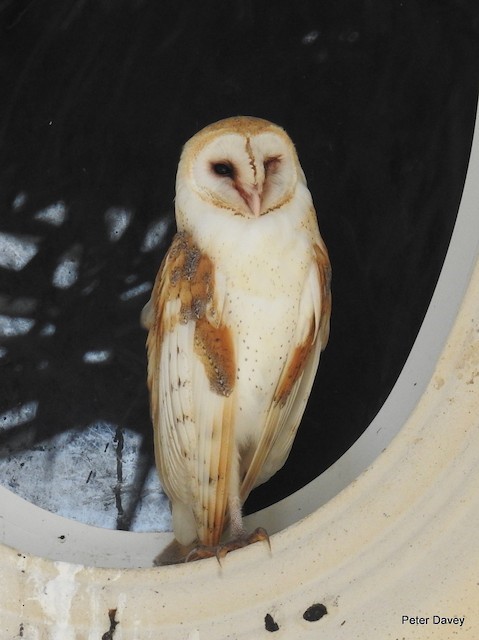
“White-winged Barn Owl”. © Peter Davey
“White-winged Barn Owl” (Tyto furcata furcata): Endemic to the western Antilles: Cuba, the Isle of Youth, Jamaica, and the Caymans. It was thought to have been extirpated from the Caymans, but small numbers have been found on Grand Cayman in recent years. Safehaven and North Side are the most promising sites to search, although it may be equally common in downtown George Town and certain other neighborhoods where it finds appropriate structures for roosting. The taxonomy of barn owls globally (i.e., the formerly cosmopolitan Tyto alba) is unsettled. The “White-winged” form is distinctive—the largest form in the Americas, with unique plumage and apparently different proportions—and seems to be a good candidate for eventual recognition as a separate species.
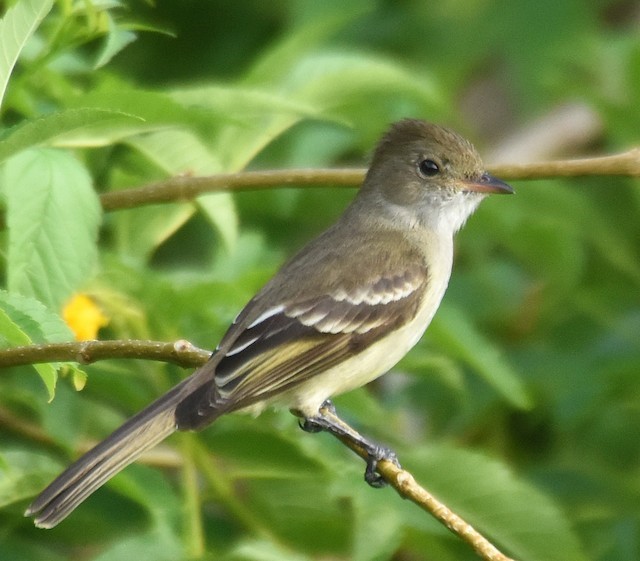
Caribbean Elaenia. © Steven Mlodinow
Caribbean Elaenia (Elaenia martinica): Patchily distributed on small islands on the western and eastern rims of the Caribbean, it is ubiquitous in suitable habitat throughout Grand Cayman, including Botanic Park, the Mastic Trail, North Side, and most other sites with stands of tall brush.
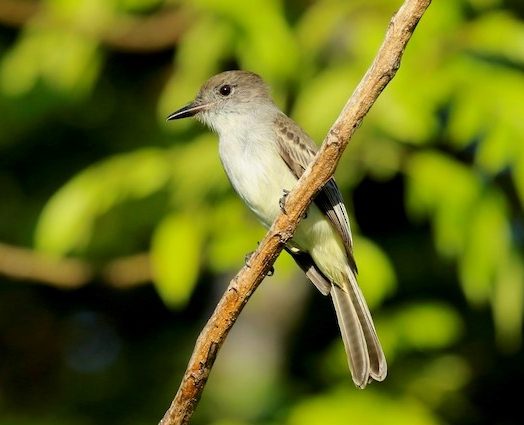
La Sagra’s Flycatcher. © Knut Hansen
La Sagra’s Flycatcher (Myiarchus sagrae): Endemic to the Bahamas, Cuba, the Isle of Youth, and Grand Cayman. Occurs throughout Grand Cayman, but somewhat inconspicuous when not calling. It is most readily found at Botanic Park, the Mastic Trail, and North Side.

Loggerhead Kingbird. © Charmaine Anderson
Loggerhead Kingbird (Tyrannus caudifasciatus): Found throughout the western Antilles: the Bahamas, Cuba, the Isle of Youth, Jamaica, and the Caymans. Generally common throughout its range and easily found at Botanic Park, the Mastic Trail, and North Side. Traditionally considered conspecific with Hispaniolan and Puerto Rican Kingbirds, but differences in plumage and vocalizations appear to confirm that these are best regarded as separate species. The remaining subspecies appear more similar to one another, but vocal differences suggest that their status could eventually be re-evaluated.
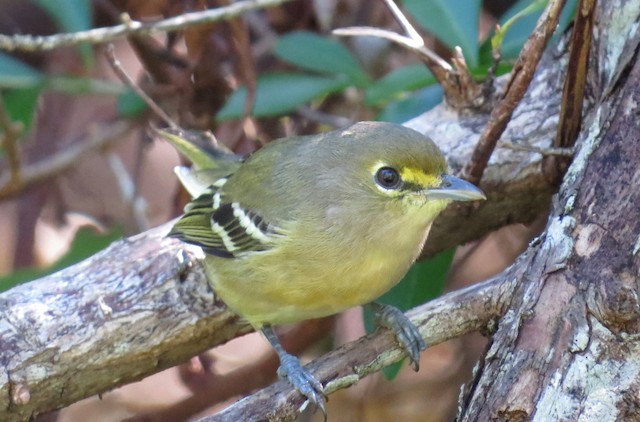
Thick-billed Vireo. © Michael Woodruff
Thick-billed Vireo (Vireo crassirostris): Endemic to the western Antilles, with a notable proclivity to small islands: the Bahamas, the Caymans, and keys adjacent to Cuba and Hispaniola. Abundant in the Bahamas, and also common on the Caymans. Easy to find at Botanic Park, the Mastic Trail, and North Side.
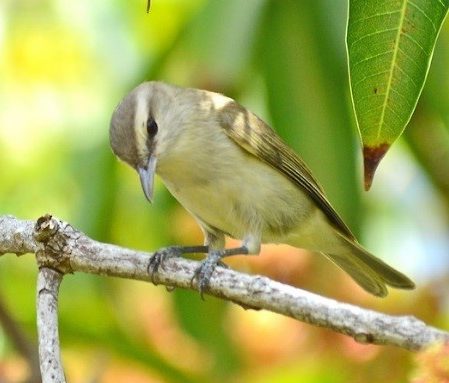
Yucatán Vireo. © Alan Van Norman
Yucatán Vireo (Vireo magister): Peculiarly distributed on the eastern Yucatán Peninsula, adjacent islands, and Grand Cayman. Very common and easy to find at Botanic Park, the Mastic Trail, and North Side, but scarce on the western side of the island.

Western Red-legged Thrush. © Arco Huang
Western Red-legged Thrush (Turdus rubripes): Endemic to Cuba, its satellite islands, and Cayman Brac. Fairly common and easy to find throughout the island, including the western end near the airport, the Brac Parrot Reserve, and the northeastern bluffs. The Brac population is recognized as a subspecies, coryi, but does not differ visibly from the Cuban subspecies.
Cayman Islands – Orientation Map
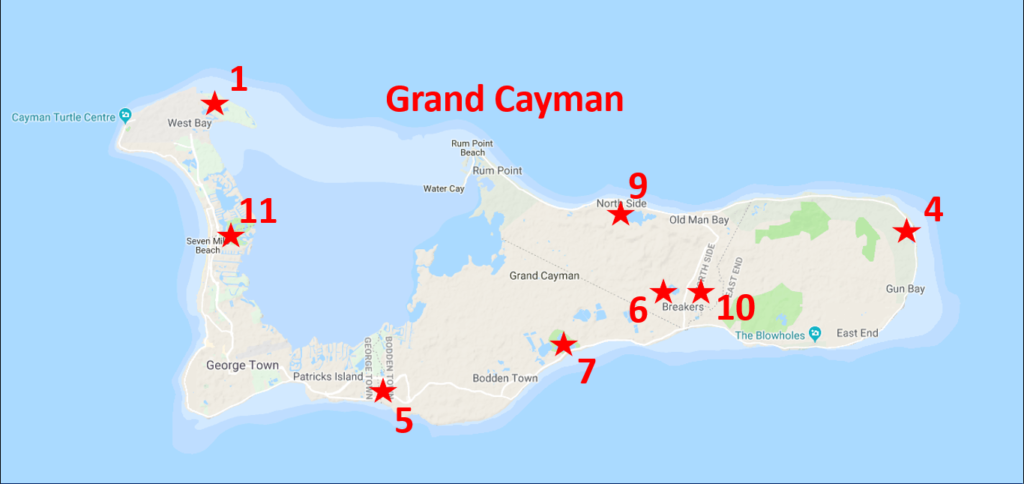
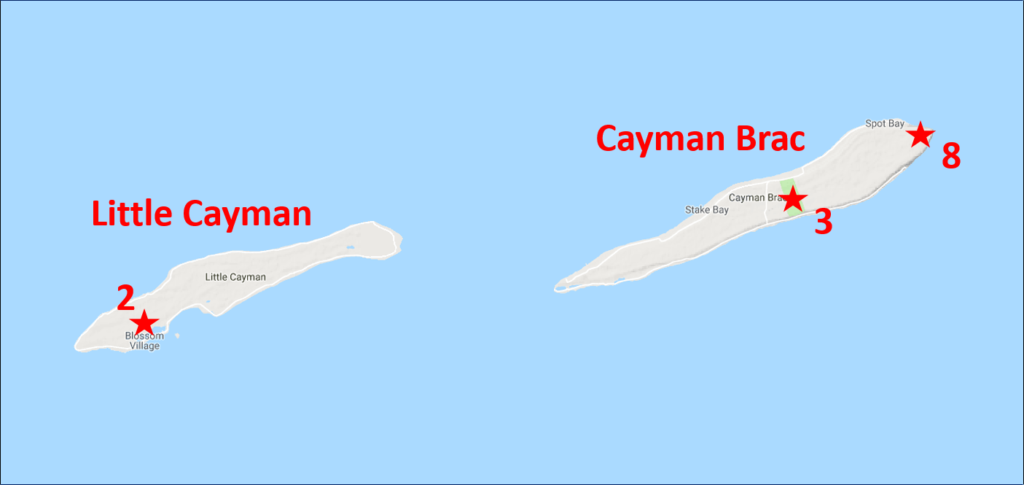
2 – Booby Pond Sanctuary, Little Cayman
3 – Brac Parrot Reserve, Cayman Brac
4 – Colliers Pond
5 – Governor Gore’s Bird Sanctuary
6 – Mastic Trail
7 – Meagre Bay Pond
8 – Northeast Point, Cayman Brac